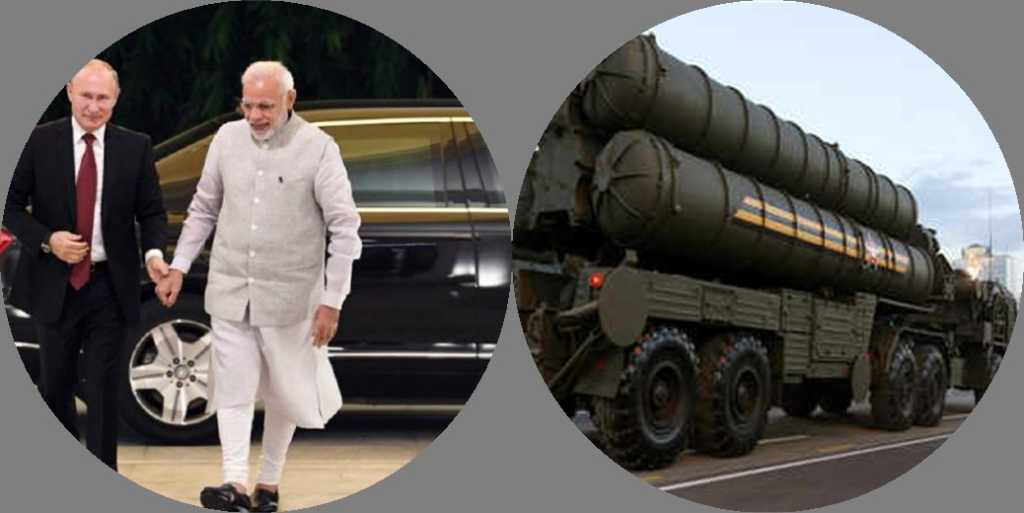In a major development, India and Russia signed the US $ 5 billion S-400 air defense system deal. The two countries also signed eight pacts at the annual bilateral summit. The defense deal was signed in a background of fear of US sanctions. The deal was signed between the two countries after a wide-ranging talks. The two sides signed eight major pacts in areas across several sectors including defense, railways, nuclear energy, space and economy. A crucial MoU was also entered into between the Indian Space Research Organization (ISRO) and the Federal Space Agency of Russia ‘ROSCOSMOS’ on joint activities in the field of human spaceflight programme Gaganyaan.
The S-400 deal was signed amidst fear of US sanctions, especially because the US had singled out the acquisition of S-400 in the past while imposing sanctions on Russian entities. The US had told potential customers of the S-400 air defense missile system that it was opposed to the move. However, shortly after the deal was signed, the US gave a guarded response. The US stated that the intent to slap sanctions against Russia was not meant to damage the military capabilities of its “allies or partners.” It was also made clear that the intent to impose sanctions on Russia was to impose costs for its “malign behavior”. India had already conveyed to the US its necessity to procure this air defense missile system. It is possible that because of this reason the US has clarified that the intent to slap sanctions is not to hurt the military capabilities of its allies. This allayed all fears of anti-India sanctions by the US. Responding to a query on impact of anti-Russia sanctions, the US embassy spokesperson stated, “Waivers of the Countering America’s Adversaries Through Sanctions Act (CAATSA) section 231 will be considered on a transaction-by-transaction basis. We cannot prejudge any sanctions decisions.”
The S-400 Triumf air defense system is going to be a huge boost as far as India’s military capabilities are concerned. It is one of the most advanced air defense systems in the world. It can track numerous incoming objects- all kinds of aircraft, missiles and UAVs — in a radius of a few hundred kilometers and launch appropriate missiles to neutralize them. The S-400 air defense system is a highly sophisticated and robust system being a large complex of radars, control systems and different types of missiles. Its radars can pick up an incoming objects up to a range of 1,000 km, track several incoming objects simultaneously and launch appropriate missiles for such targets. It has a high success rate to go with such high standards of efficiency and automation. It can engage up to a mind boggling 36 targets at a time and simultaneously launch 72 missiles. Air Force chief BS Dhanoa said that this will provide a much needed “booster” to the Air Force. It is designed to destroy air attacks, that includes stealth aircraft and any other aerial targets. Air Vice Marshal (retd) Manmohan Bahadur said, “This is the most lethal weapons system in the world and it provides four different types of layered air defence.” The signing of the deal assumes great significance given India’s security concerns in background of an overly aggressive neighbor in the form of Pakistan and India’s cold relations in the past with China. China, too has signed a deal with Russia for the procurement of the same air defense system.
This goes down as one of the historical defense deals inked by India and is going to be a massive shot in the arm as far as India’s defense capabilities are concerned. The way all the fear of US sanctions was managed in a bold and effective manner is a corroboration of strong national leadership that is deeply concerned about military needs and capabilities.
